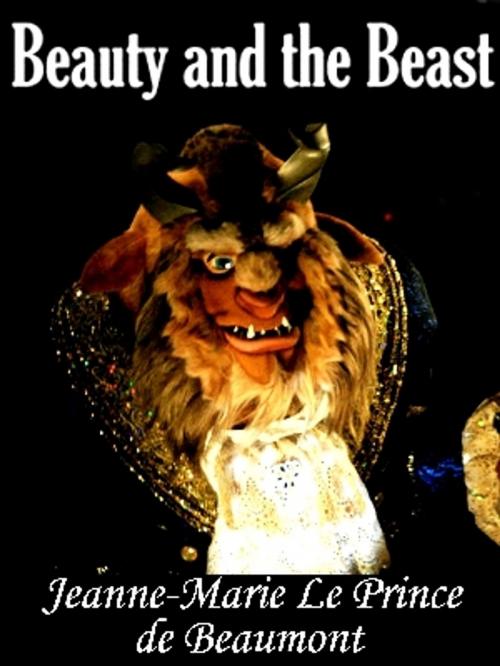| Author: | Jeanne-Marie Le Prince de Beaumont | ISBN: | 1230000104401 |
| Publisher: | nse | Publication: | February 3, 2013 |
| Imprint: | Language: | English |
| Author: | Jeanne-Marie Le Prince de Beaumont |
| ISBN: | 1230000104401 |
| Publisher: | nse |
| Publication: | February 3, 2013 |
| Imprint: | |
| Language: | English |
Beauty and the Beast is a traditional fairy tale. The first published version of the fairy tale was a rendition by Gabrielle-Suzanne Barbot de Villeneuve, published in La jeune américaine, et les contes marins in 1740.The best-known written version was an abridgement of her work published in 1756 by Jeanne-Marie Le Prince de Beaumont, in Magasin des enfants, ou dialogues entre une sage gouvernante et plusieurs de ses élèves; an English translation appeared in 1757.
Variants of the tale are known across Europe. In France, for example, Zémire et Azor is an operatic version of the story of Beauty and the Beast written by Marmontel and composed by Grétry in 1771. It had enormous success well into the 19th century.It is based on the second version of the tale.
Amour pour amour, by Nivelle de la Chaussée, is a 1742 play based on Villeneuve's version.
A wealthy merchant lived in a mansion with his three daughters, all of whom were very beautiful, but only the youngest, at fourteen, is named Belle (a French name equivalent to "Beauty") for being lovely and pure of heart; her sisters, in contrast, are wicked and selfish. The merchant eventually loses all of his wealth in a tempest at sea, and he and his daughters must therefore live in a small farmhouse and work for their living. After some years of this, the merchant hears that one of the trade ships he had sent off has arrived back in port, having escaped the destruction of its compatriots; therefore, he returns to the city to discover whether it contains anything of monetary value. Before leaving, he asks his daughters whether they desire that he bring them any gift upon his return. His two elder daughters ask for jewels and fine dresses, thinking that his wealth has returned; Belle is satisfied with the promise of a rose, as none grow in their part of the country. The merchant, to his dismay, finds that his ship's cargo has been seized to pay his debts, leaving him without money to buy his daughters their presents...
Beauty and the Beast is a traditional fairy tale. The first published version of the fairy tale was a rendition by Gabrielle-Suzanne Barbot de Villeneuve, published in La jeune américaine, et les contes marins in 1740.The best-known written version was an abridgement of her work published in 1756 by Jeanne-Marie Le Prince de Beaumont, in Magasin des enfants, ou dialogues entre une sage gouvernante et plusieurs de ses élèves; an English translation appeared in 1757.
Variants of the tale are known across Europe. In France, for example, Zémire et Azor is an operatic version of the story of Beauty and the Beast written by Marmontel and composed by Grétry in 1771. It had enormous success well into the 19th century.It is based on the second version of the tale.
Amour pour amour, by Nivelle de la Chaussée, is a 1742 play based on Villeneuve's version.
A wealthy merchant lived in a mansion with his three daughters, all of whom were very beautiful, but only the youngest, at fourteen, is named Belle (a French name equivalent to "Beauty") for being lovely and pure of heart; her sisters, in contrast, are wicked and selfish. The merchant eventually loses all of his wealth in a tempest at sea, and he and his daughters must therefore live in a small farmhouse and work for their living. After some years of this, the merchant hears that one of the trade ships he had sent off has arrived back in port, having escaped the destruction of its compatriots; therefore, he returns to the city to discover whether it contains anything of monetary value. Before leaving, he asks his daughters whether they desire that he bring them any gift upon his return. His two elder daughters ask for jewels and fine dresses, thinking that his wealth has returned; Belle is satisfied with the promise of a rose, as none grow in their part of the country. The merchant, to his dismay, finds that his ship's cargo has been seized to pay his debts, leaving him without money to buy his daughters their presents...















